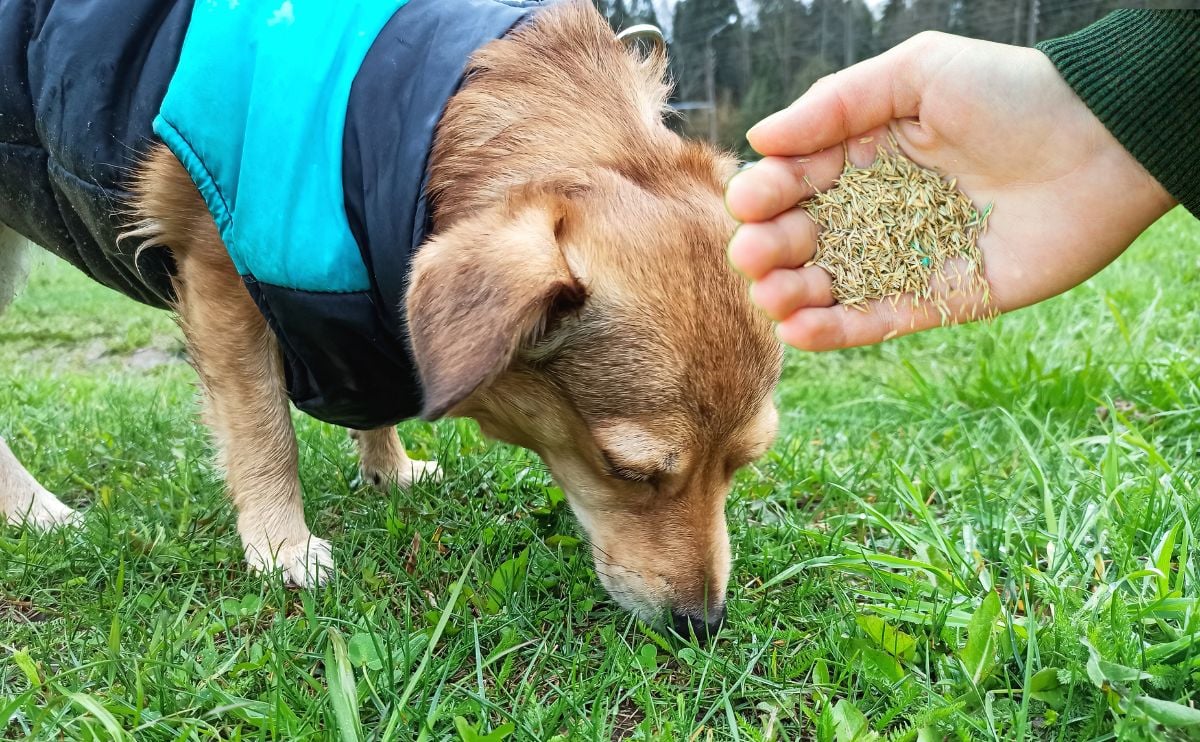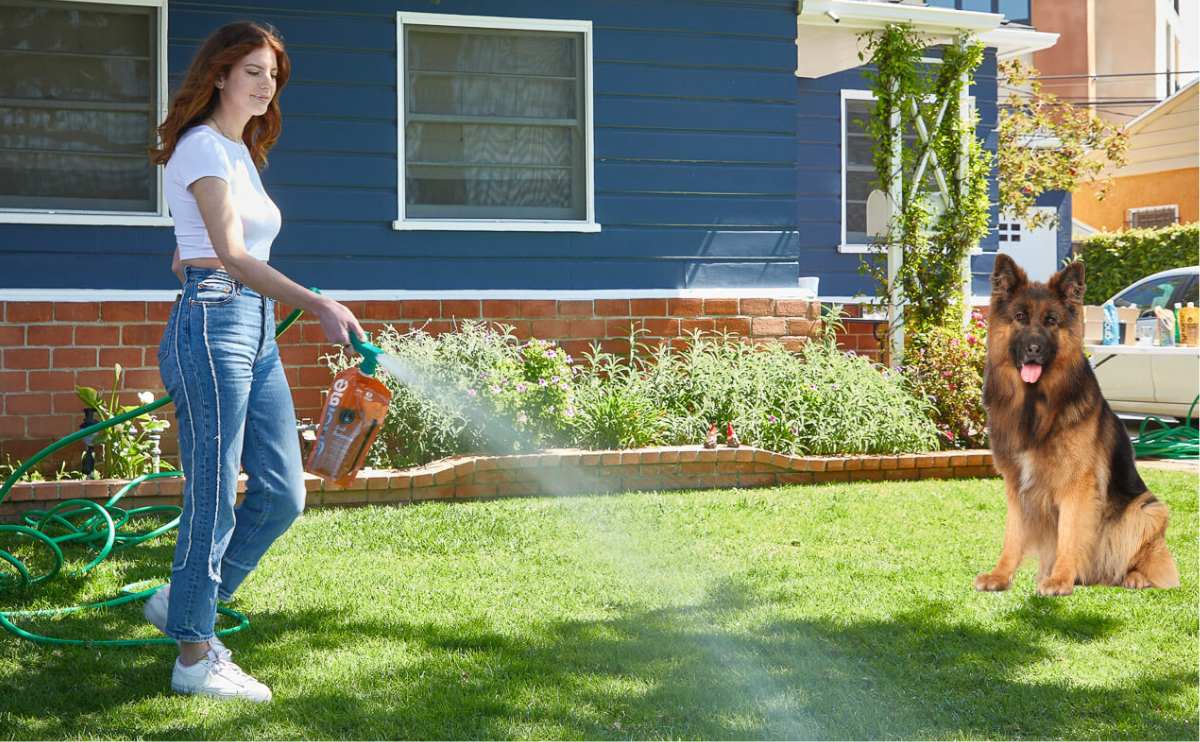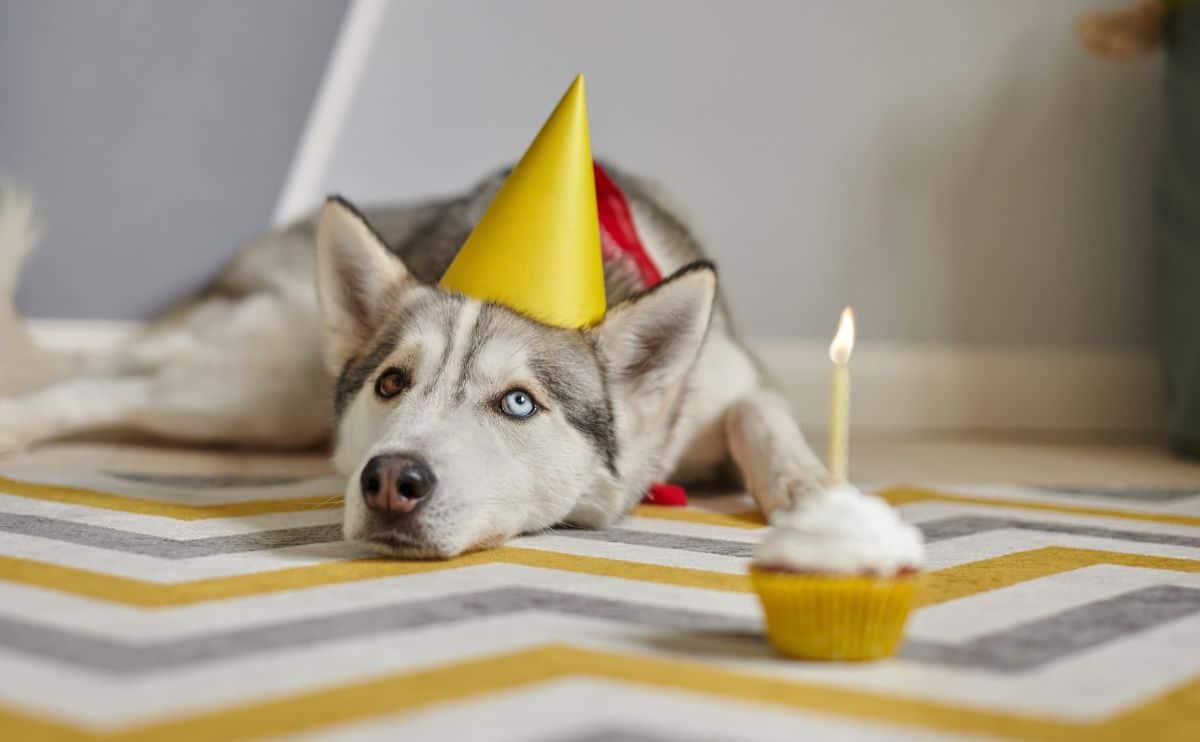When you purchase through links on our site, we may earn a commission. Here’s how it works.
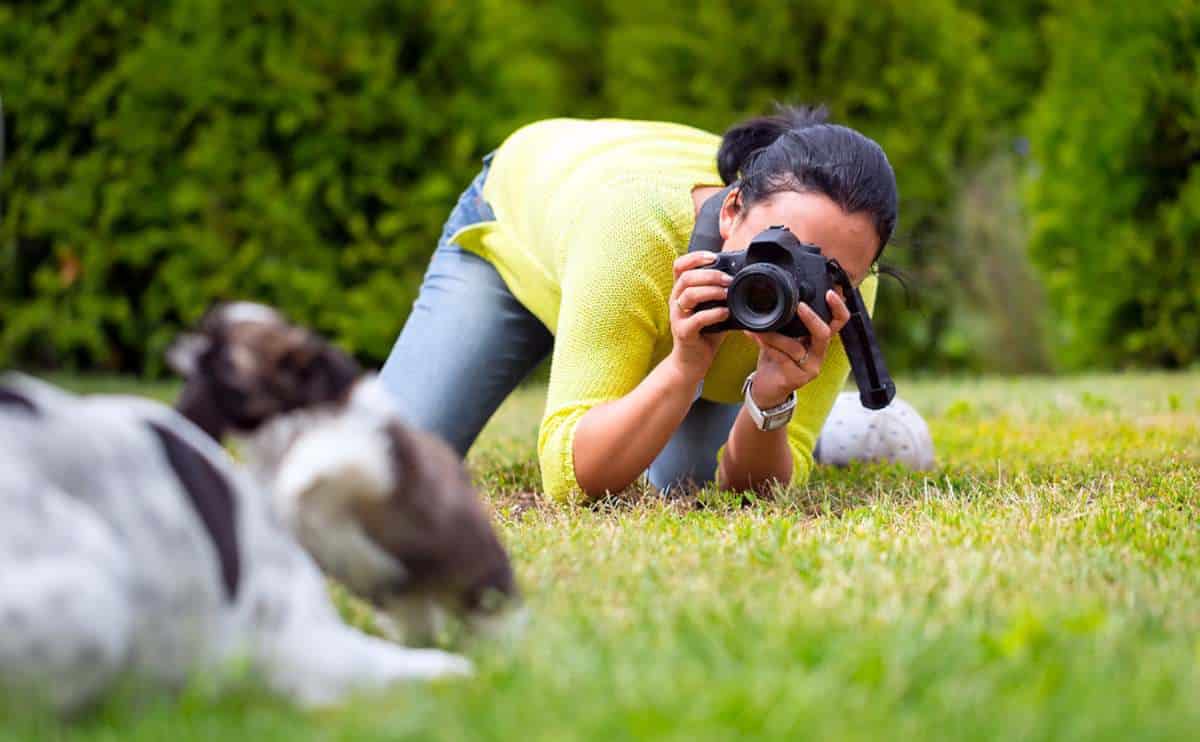
Having professional-looking photos of your pets can be a challenge. Snapping stunning pet photos involves a combination of technical skills, time, and understanding your pet’s behavior. But I’ve learned from experience it’s worth the effort to have your pet documented for years to come. It’s so fun looking back at my dog in all phases of life, and I never regret having too many memories to relive.
According to a Wisdom Panel Survey, 50% of pet parents say they’ve posted photos of their pets on social media at least once a month, and more than 17% have dedicated accounts for their pets. Maybe you want to make your dog Instagram famous. Or create a photo book or gift. Whatever your reason, here are in-depth tips for pet photography, including recommendations on the type of camera to use.
Best Camera & Lenses To Use For Pet Photography
Before we get into pet photography techniques, you might be wondering what the best equipment is to get the most perfect pics.
Here are some recommended camera models:
- Canon EOS Rebel series
- Nikon D3000 or D5000 series
- Sony Alpha series (Sony A6000)
- Fujifilm X-T series
- Canon PowerShot G series
- Sony RX100 series
These camera models cover a range of needs and preferences, from entry-level to professional-grade equipment. When choosing a camera for pet photography, consider factors such as budget, portability, autofocus capabilities, and overall image quality. Additionally, investing in good lenses, such as a prime lens with a wide aperture, can further enhance your pet photography experience.
If you really want to up your game, here are the various types of lenses to consider (including for your iPhone):
- Standard Zoom Lens (24-70mm or 24-105mm): These lenses offer a versatile range, suitable for a variety of shots, from portraits to wider scenes.
- Telephoto Zoom Lens (70-200mm or 100-400mm): Ideal for photographing animals from a distance, such as wildlife or shy pets.
- Prime Lens (50mm or 85mm): Lenses with wide apertures (e.g., f/1.8 or f/1.4) are excellent for creating a shallow depth of field and capturing sharp subjects against a blurred background.
- Macro Lens (60mm or 100mm): Designed for extreme close-ups, capturing intricate details like fur, feathers, or textures.
- Wide-Angle Lens (16-35mm or 24mm): Useful for capturing animals in their environment or creating dramatic wide-angle compositions.
- Super-Telephoto Lens (300mm, 400mm, 500mm, or 600mm): Essential for wildlife photography where maintaining a safe distance is crucial.
- Fisheye Lens: Offers a unique, distorted perspective suitable for creative and artistic shots.
- RhinoShield Add-On Lenses: They offer a variety of lenses, including a 2.5x telephoto, wide-angle, and macro, designed to be compatible with RhinoShield phone cases and are portable and easy to attach
7 Tips For Pet Photography
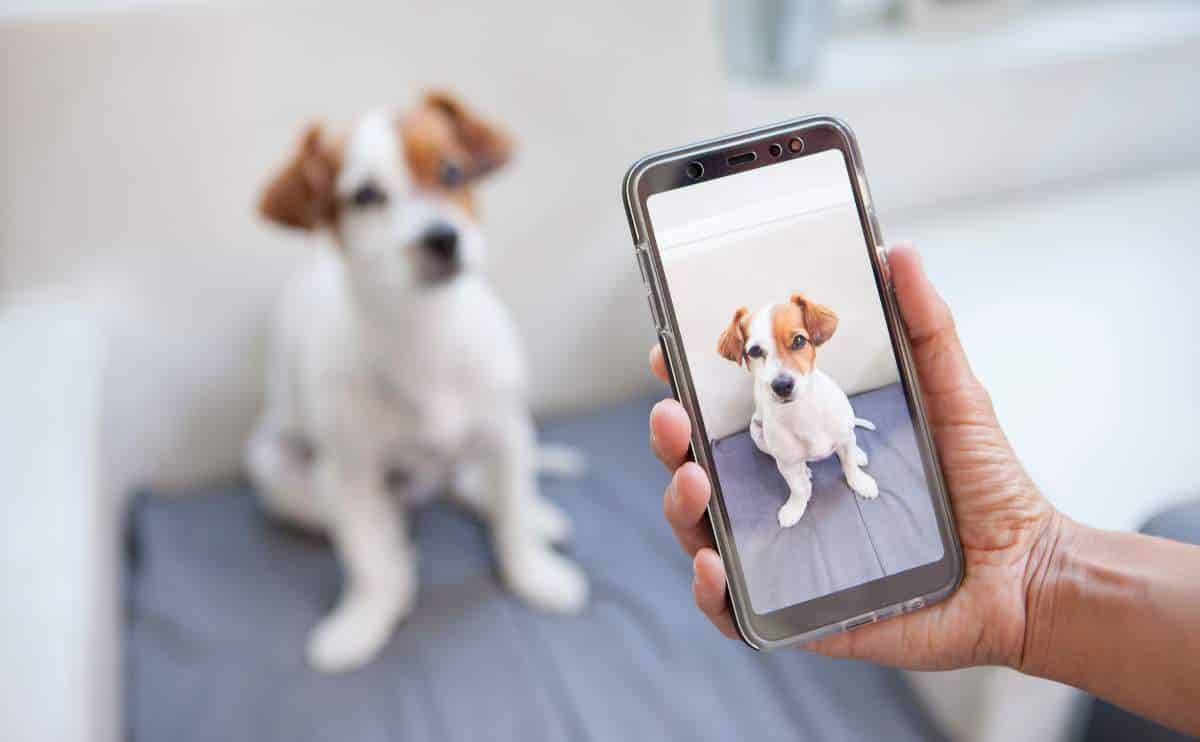
Whether you’re using a DSLR, mirrorless, point-and-shoot camera, or your smartphone, understanding your equipment and incorporating these dog photography tips will help you capture beautiful and memorable moments with your furry friend. Remember, the key to successful pet photography is building a connection with your pet, allowing their personality to shine through, and patience.
Framing The Shot
We all know what our pets look like from our level. Explore what it’s like to be on their level. Crawl around on the ground with your dogs. Lay next to them. Get photos of them from their perspective. Focus on the eyes, a window to their soul. Ensure they are sharp and in focus. Context matters as well. Include elements that tell a story about your surroundings, like your pet’s favorite blanket or a favorite spot in the house.
Lighting
Use natural light to avoid making your dog look washed out (or red eyes). Also, bursts of light from camera flash can frighten an animal, and you want to keep them as comfortable as possible. Opt for natural light during the golden hours (early morning or late afternoon) for soft, warm tones. Avoid harsh midday sunlight, which can create shadows. You could use a ring light or fill light, although those are less natural and might be uncomfortable for your pooch.
Dog Posing
The most authentic and charming selfies happen when your pet is just being themselves. If you have a lazy dog, take a picture of him yawning. If you’ve got a cat with a really cool trick, photograph her doing that trick. Try different angles and compositions to add variety to your shots. Capture your pet in their natural environment or incorporate props that enhance the story.
Camera Settings
Photographing pets can be quick and unpredictable. Use a fast shutter speed to freeze motion and capture sharp images. This can be done using burst mode on an iPhone to take a series of rapid photos that you can then pick the best from. If on a traditional DSLR camera, using a wide aperture (low f-stop) will create a shallow depth of field to emphasize your pet while blurring the background. This is similar to portrait mode on iPhones.
Timing
If you want your pet to be playful in the photo, don’t photograph them after a nap. Do it at a time when you know you’ll get the photos you want. If your dog has his routine run through the house where he goes bonkers around the same time each evening, and you’d like to capture it, be sure you have your camera or phone near you so as not to miss out on the window of opportunity.
Props & Treats
Need some help getting them to look at the camera? Use a string to intrigue your cat or a squeaky toy to capture your dog’s attention. Treats tend to entice better behavior, too. Don’t be too mean teasing them, though. Be sure to let them have the toy or treat eventually! The Pooch Selfie (as seen on Shark Tank) is a great way to get Fido to pay attention to your smartphone camera, and it may even make him smile big! You could even use this tool to take a selfie with your favorite furry friend!
You may also consider posing your dog cuddled up with a favorite stuffed cat toy or in a Santa hat for Christmas card shots. The possibilities are endless!
Selfie With Pet
Trying to get a selfie with your BFF? Taking a photo of you with your pet can be a special moment to cherish, but comes with additional hurdles. Pets can sense your energy, so being relaxed will help your pet feel at ease and cooperative. Position the camera at your pet’s eye level for a more engaging and natural perspective. If your phone has a front-facing camera with a screen, use it to show your pet their own reflection. This can pique their interest and make them more cooperative.
Editing Pet Photos After The Fact: 12 Tips
And after all those tips and snapping, if you still don’t snap the perfect picture, don’t worry. That’s what editing is for! Filters can enhance your images, or try adjusting the brightness, contrast, and color balance subtly to maintain a natural look. Here are some tips to get your takes looking top-notch:
- Play with the exposure to ensure details are visible but not overexposed.
- Fine-tune contrast to add depth and definition to your images.
- Correct the white balance to ensure accurate color representation.
- Increase vibrance for a subtle color boost without over-saturating.
- Adjust saturation to enhance or desaturate specific colors.
- Apply selective sharpening to enhance fur details and facial features.
- Use masking to avoid sharpening unwanted areas.
- Experiment with different aspect ratios to change the composition.
- Square formats often work well for pet portraits on social media.
- Align key elements with the rule of thirds grid for balanced compositions.
- Crop to emphasize your pet within the frame.
- Blur the background slightly to draw more attention to your pet.
Worst Pet Photos (Video)
Maybe this video will convince you to step up your pet photography game. We certainly hope that our pet photography tips help you get better photos than these!
What Should I Do With My Pet’s Photos?
There are tons of options! Frame them, print them on canvas to hang on your wall (we recommend CanvasPop), add them to a digital photo frame, and more! You love that cuddle monster and want to show him off to friends, family, and coworkers. A great photo you took of your sister’s dog could also make a great personalized gift! So be sure to share your adorable photos with others.
Why Trust Us?
Sadie, alongside her charming companion, a Cavalier King Charles Spaniel, has been taking pictures of dogs and their parents for both professional and personal use her entire life. She primarily uses her iPhone but has a Canon DSLR camera for taking photos when needed. She took her first photography class in Junior High, where she learned the basics of composition and dark rooms, even developing her own film and prints. She studied design in college, refining her creative eye and improving her techniques in photography as the profession transitioned to more digital. She oversees all the images, graphics, and digital art for Canine Journal and its sister websites. She’s also been hired to take newborn portraits, headshots, family photos, and lifestyle pictures for clients, family, and friends.
Tagged With: